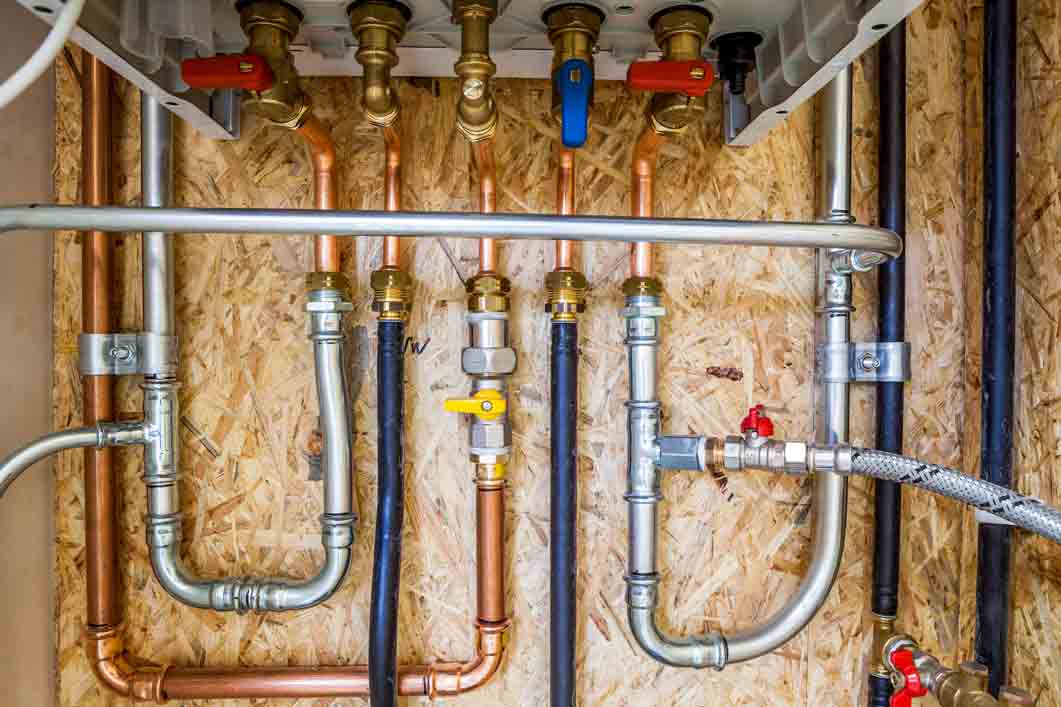Repiping FAQs for Homeowners

Repiping is often one of the major construction projects that homeowners choose to take on when they're trying to improve the value of their home or avoid major plumbing problems. This FAQ can help homeowners decide when it's time to repipe their house and can also help homeowners understand the benefits of repiping.
What Is Repiping?
Usually when a contractor refers to repiping, they're talking about replacing the lines that supply water to the home. Repiping often involves replacing old galvanized pipes with modern copper piping. Some homeowners will choose to replace their home with modern PEX piping.
Repiping is a large construction project, and it involves installing all new pipes throughout the various rooms of the house. Not all rooms have plumbing, though, so repiping doesn't affect every room of the house.
How Can You Tell If Repiping Is Necessary?
Many homeowners choose to repipe their home after struggling for months or years with plumbing leaks. But you shouldn't wait too long after continually struggling with leaks. Homeowners who wait too long to decide to replace their plumbing may find themselves facing structural damage, wood rot, and mold, so you should repipe before the situation becomes critical.
You'll know it's time to repipe when you find yourself calling a plumber on a regular basis, repairing leaks once a year or more, or struggling with low water pressure from hard water scale. Of course, the best way to tell when it's time to repipe your home is by talking to a reputable plumber. You may have bad pipes and not know it. For example, galvanized pipes frequently experience leaks, so homeowners commonly replace galvanized pipes.
Not all plumbing problems are solved by repiping, so work with a licensed, reputable plumber to help you decide when repiping is the best option.
What's Involved in Repiping?
Wherever possible, a good plumber will replace the pipes from the crawl space or basement to avoid damaging tiles and drywall. However, most of the home's pipes are located in the walls, so a typical repiping will involve tearing out portions of the walls and floors.
Often, this involves destruction of some tile, which then must be replaced. For this reason, many homeowners will choose to renovate their bathroom at the same time when they repipe their home.
How Long Does Repiping Take?
This depends on the number of people working on the project, the size of the home, and the condition of the pipes. Repiping can often take days. Your plumber can tell you how long your repiping will take, when the water will be shut off, and other details.
What Are the Benefits of Repiping Your Home?
There are many benefits home repiping. All new pipes and faucets makes it easier to make repairs, and it also makes it unlikely that the plumbing will need repair any time in the near future. In addition, many plumbers offer a warranty at the time of plumbing installation.
A warranty helps ensure that the pipes in the home will be covered for repairs or workmanship defects for a specified period of time after the repiping takes place. Finally, repiping the home can give peace of mind to the homeowner.
How Much Does a Typical Repiping Cost?
A typical repiping costs between $4,000 and $10,000, depending on the type of pipes, size of the house, number of people doing the work, and the hourly rate of the plumber. The best way to find out how much a repiping will cost is to contact a plumber who can give a quote for the work to be done.
Who Can You Turn to for More Information?
If you need more information about repiping your home, contact Daytona






